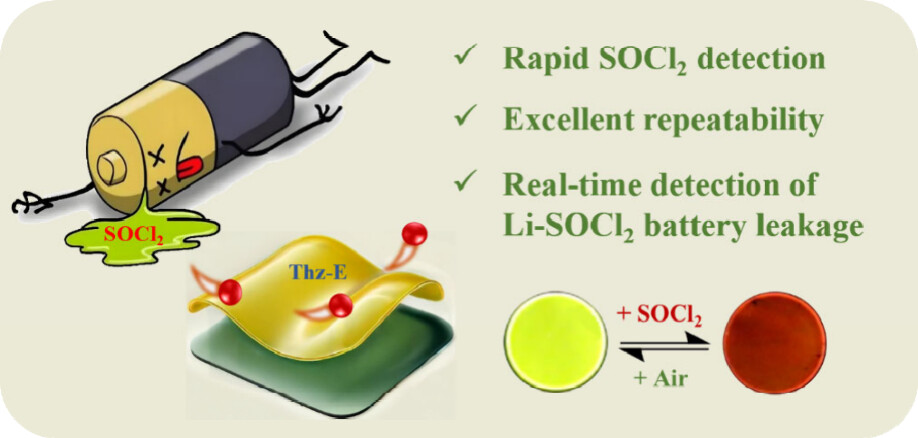
Lithium thionyl chloride (Li–SOCl2) batteries are widely used due to their high energy density and long shelf life. However, the corrosive nature of SOCl2poses a safety hazard, necessitating effective leak detection methods. We report an approach for real-time fluorescent detection of SOCl2leakage in Li–SOCl2batteries using a tetraphenylethene-based nanofilm. The nanofilms were prepared through the interfacial confined self-assembly method and exhibit excellent flexibility, homogeneity, tunable size and thickness, and adaptability to various substrates, enabling easy integration into sensor devices. They possess high photochemical stability and a photoluminescence quantum yield exceeding 25%, demonstrating their potential as high-performance fluorescent sensing material. The nanofilms also exhibit high sensitivity, good reproducibility, and selectivity toward SOCl2detection. Upon exposure to SOCl2vapor, the nanofilm shows a red-shifted and fluorescence quenching response, attributed to the protonation of the acylhydrazone bond in the nanofilm by the hydrolysis product of SOCl2, which disrupts the electronic structure of the nanofilm and leads to a decrease in the fluorescence intensity and a shift in the emission wavelength. A detection limit of ∼1.31 ppt and excellent repeatability over 300 cycles are demonstrated, highlighting their high sensitivity and reliability. This work paves the way for a highly sensitive and reliable leak detection system for Li–SOCl2batteries, enhancing their safety and reliability in various applications.
原文链接:https://pubs.acs.org/doi/10.1021/acsami.4c12888